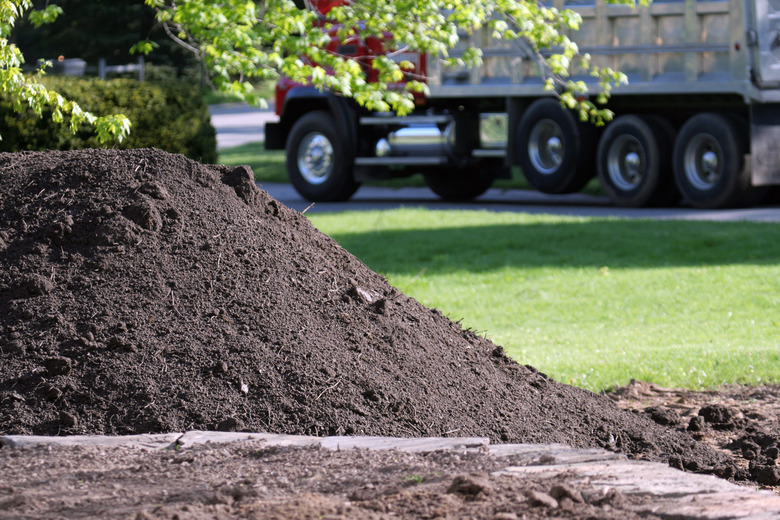What Is A Cubic Yard Of Soil?
The number of cubic feet in a yard is 27. To measure how many cubic feet of soil you want, measure the width and length of your area, multiply by the depth of coverage you want, and then divide by 27 to get the cubic yards you will need.
Your local landscape suppliers likely charge for soil amendments by the cubic yard. Whether it's soil or mulch or some other item, it's a lot by any measure. If you are hauling it in a small pickup, it will take up the whole bed.
Tip
If you're hauling a cubic yard in a small pickup, it will take up the whole bed.
How Much Is a Cubic Yard?
A cubic yard is a square yard, which means that it's 3 feet wide, 3 feet tall and 3 feet deep: a cube. A cubic yard measures volume rather than weight. So it doesn't matter if you are purchasing a lightweight mixture, such as mulch, or a cubic yard of much-heavier gravel—a cubic yard is the same thing.
Tip
A cubic yard contains 27 cubic feet.
How Many Cubic Feet Are in a Cubic Yard?
To break it down further, a cubic yard equals 27 cubic feet. This requires a completely different calculation from square feet, which is simply the area. A cubic foot or yard is a 3D measurement, while square footage is just 2D. For example, 1 square yard contains 36 by 36 inches, or 1,296 inches. One cubic foot is 36 by 36 by 36 inches, or 46,656 inches.
How Much Does a Cubic Yard Cover?
By measuring an area, it's pretty easy to figure out how much a cubic yard covers. For example, if your area is 10 by 10 feet and you want coverage that is 3 inches deep, you'll need one cubic yard. For 6 inches of depth, you'll need 2 cubic yards.
What Does a Cubic Yard Weigh?
A cubic yard of topsoil weighs about 1,800 pounds, although some experts say it could weigh up to 2,200 pounds, depending on its moisture content. If you are hauling sand, gravel or stone, it will be much heavier, and it could weigh up to 3,000 pounds.
Check with your supplier to be sure, so you can arrange to haul it with a large enough vehicle.
How Much Do You Need for Your Project?
To determine the amount of soil you need for your project, measure its width and length in feet and decide how thick a coverage you need. Your calculation will be: length in feet x width in feet x depth in feet. This gives you the volume. Then divide that number by 27, the number of cubic feet in a cubic yard, to give you the number of cubic feet in a yard.
For example, if you are building a raised bed that is 4 feet wide by 8 feet long by 2 foot in depth:
- Multiple 4 feet x 8 feet x 2 feet: 64 square feet, which is your volume
- Divide that result by 27 to get the number of cubic feet: 2.37 cubic feet
Remember, though, that soil will settle once you spread it in your garden, so some experts recommend upping the amount you think you need by 10 to 25 percent.
Tip
Several online calculators are available to help ensure you get your calculations right. For example, Home Advisor maintains a calculator, as do many suppliers.
Measuring Odd-Shaped Areas
To measure odd-shaped areas in your landscape, divide them up into separate sections, i.e., smaller squares and rectangles, and measure the length and width of those. Add these to get the total width and length; then multiply by the depth you want.
